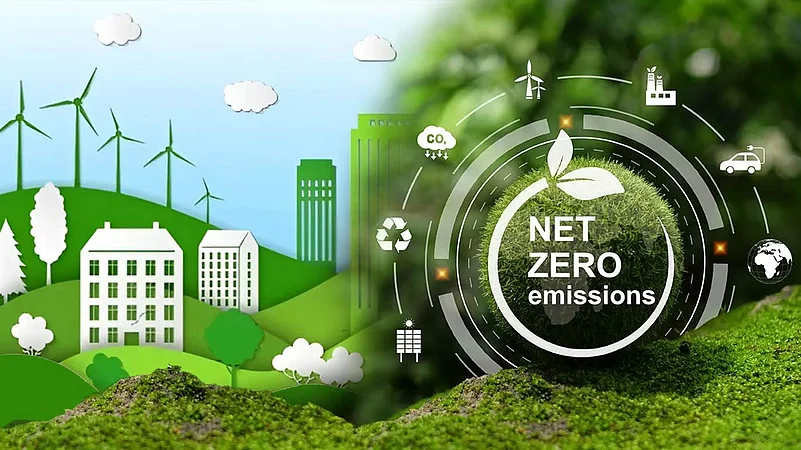India's top corporations, despite their ambitious net-zero emissions pledges, are lagging significantly in adopting renewable energy sources for electricity. An analysis by the think tank Climate Risk Horizons (CRH) revealed that out of 169 billion units of electricity consumed by leading companies in the cement, steel, aluminium, textiles, and fertiliser sectors, only 8 billion units—approximately 6 percent—came from renewable sources.
The report highlights that these energy-intensive industries, which are among the highest contributors to India’s greenhouse gas emissions, have a considerable portion of their energy consumption allocated to electricity—a segment that can be more easily transitioned to renewable sources. However, most companies in these sectors have been slow to make this shift, citing technological challenges in industrial processes.
Advertisement
The analysis found that the fertiliser sector performed the worst, with companies like Coromandel, National Fertilisers, Chambal Fertilisers, Rashtriya Chemicals and Fertilisers, and Gujarat State Fertilisers & Chemicals sourcing less than 0.5 percent of their energy needs from renewables. On the other hand, the cement sector, which included companies like Shree Cement, Ambuja Cement, Dalmia Cement, Ultratech Cement, and ACC Cement, fared slightly better, sourcing just 2.5 percent of their energy needs from renewable sources.
Shahi Textiles, one of India's largest apparel manufacturers, emerged as a leader in renewable energy adoption among heavy industries. The company sources 70 percent of its electricity from renewable energy and has set a target for 100 percent renewable energy consumption, aligning its goals with the Science Based Targets Initiative (SBTI).
Advertisement
The report also contrasted the efforts of heavy industries with those of less energy-intensive sectors like Fast-Moving Consumer Goods (FMCG) and Information Technology (IT). While these sectors contribute significantly to the Indian economy, their transition to renewable energy is comparatively easier. The FMCG sector, including companies like Britannia,
Godrej, ITC Limited, Nestle, and Hindustan Unilever Limited, reportedly sources 83 percent of its renewable energy from biofuels and biomass, while the IT sector, which includes HCL Tech, Tech Mahindra, WIPRO, Infosys, and Tata Consultancy Services, sources around 45 percent of its energy from renewables.
However, the report cautioned that the high performance of these sectors might be misleading, given the relative ease with which they can switch to renewable energy. It also noted that biofuels and biomass are not sustainable renewable sources at an industrial scale.
Except for Jindal Steel, no other heavy industry company was found to be piloting a decarbonisation programme. Jindal Steel is experimenting with green hydrogen to replace ammonia in its steel-making process.
Renewable-based electrification has the potential to avoid approximately 180 million tonnes of CO2 emissions by 2030, leading to a 17 percent reduction in the projected 2030 emissions from these industries, according to another think tank, Ember Climate. Ember’s report emphasises that most of the achievable decarbonisation in Indian industries during the 2020s will come from greening their electricity supply, providing broader benefits to both industries and the renewable energy ecosystem.
Advertisement
Despite the potential benefits, most companies assessed in the CRH report are procuring renewable energy at levels below the Renewable Purchase Obligation (RPO) of 24.61 percent. Fernandes highlighted the lack of enforcement by state regulatory commissions, stating, "The state regulatory commissions, in most cases, are not either interested in pursuing this target or do not have the ability to actually pursue it. That’s why it’s falling by the wayside."
The report calls for renewable energy power purchase agreements (PPA) to become the primary source of corporate decarbonisation. It suggests that the new Green Energy Open Access Regulations, which allow industries to purchase power directly from generators instead of traditional distribution companies, could be a critical step in accelerating the transition to renewable energy.














